Medicine
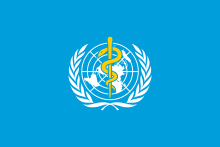
Medicine is the
Medicine has been practiced since
Prescientific forms of medicine, now known as traditional medicine or folk medicine, remain commonly used in the absence of scientific medicine and are thus called alternative medicine. Alternative treatments outside of scientific medicine with ethical, safety and efficacy concerns are termed quackery.
Etymology
Medicine (
Clinical practice

Medical availability and clinical practice vary across the world due to regional differences in culture and technology. Modern scientific medicine is highly developed in the Western world, while in developing countries such as parts of Africa or Asia, the population may rely more heavily on traditional medicine with limited evidence and efficacy and no required formal training for practitioners.[8]
In the developed world, evidence-based medicine is not universally used in clinical practice; for example, a 2007 survey of literature reviews found that about 49% of the interventions lacked sufficient evidence to support either benefit or harm.[9]
In modern clinical practice,
The components of the medical interview[10] and encounter are:
- Chief complaint (CC): the reason for the current medical visit. These are the symptoms. They are in the patient's own words and are recorded along with the duration of each one. Also called chief concern or presenting complaint.
- Current activity: occupation, hobbies, what the patient actually does.
- Family history (FH): listing of diseases in the family that may impact the patient. A family tree is sometimes used.
- History of present illness (HPI): the chronological order of events of symptoms and further clarification of each symptom. Distinguishable from history of previous illness, often called past medical history (PMH). Medical historycomprises HPI and PMH.
- herbal medicines or remedies. Allergiesare also recorded.
- Past medical history (PMH/PMHx): concurrent medical problems, past hospitalizations and operations, injuries, past infectious diseases or vaccinations, history of known allergies.
- Review of systems (ROS) or systems inquiry: a set of additional questions to ask, which may be missed on HPI: a general enquiry (have you noticed any digestive tract, urinary tract, etc.).
- Social history (SH): birthplace, residences, marital history, social and economic status, habits (including diet, medications, tobacco, alcohol).
The physical examination is the examination of the patient for medical signs of disease that are objective and observable, in contrast to symptoms that are volunteered by the patient and are not necessarily objectively observable.
The clinical examination involves the study of:[14]
- Abdomen and rectum
- Cardiovascular (heart and blood vessels)
- General appearance of the patient and specific indicators of disease (nutritional status, presence of jaundice, pallor or clubbing)
- Genitalia (and pregnancy if the patient is or could be pregnant)
- Head, eye, ear, nose, and throat (HEENT)[14]
- Musculoskeletal(including spine and extremities)
- Neurological (consciousness, awareness, brain, vision, cranial nerves, spinal cord and peripheral nerves)
- mental state, mood, evidence of abnormal perception or thought).
- lungs)[14]
- Skin
- Vital signs including height, weight, body temperature, blood pressure, pulse, respiration rate, and hemoglobin oxygen saturation[14]
It is to likely focus on areas of interest highlighted in the medical history and may not include everything listed above.
The treatment plan may include ordering additional
The medical decision-making (MDM) process includes the analysis and synthesis of all the above data to come up with a list of possible diagnoses (the differential diagnoses), along with an idea of what needs to be done to obtain a definitive diagnosis that would explain the patient's problem.
On subsequent visits, the process may be repeated in an abbreviated manner to obtain any new history, symptoms, physical findings, lab or imaging results, or specialist
Institutions
Contemporary medicine is, in general, conducted within
From ancient times, Christian emphasis on practical charity gave rise to the development of systematic nursing and hospitals, and the
Most tribal societies provide no guarantee of healthcare for the population as a whole. In such societies, healthcare is available to those who can afford to pay for it, have self-insured it (either directly or as part of an employment contract), or may be covered by care financed directly by the government or tribe.
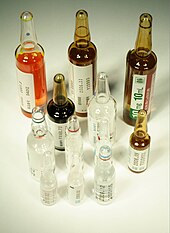
Transparency of information is another factor defining a delivery system. Access to information on conditions, treatments, quality, and pricing greatly affects the choice of patients/consumers and, therefore, the incentives of medical professionals. While the US healthcare system has come under fire for its lack of openness,[19] new legislation may encourage greater openness. There is a perceived tension between the need for transparency on the one hand and such issues as patient confidentiality and the possible exploitation of information for commercial gain on the other.
The health professionals who provide care in medicine comprise multiple professions, such as medics, nurses, physiotherapists, and psychologists. These professions will have their own ethical standards, professional education, and bodies. The medical profession has been conceptualized from a sociological perspective.[20]
Delivery
Provision of medical care is classified into primary, secondary, and tertiary care categories.[21]
Modern medical care also depends on information – still delivered in many health care settings on paper records, but increasingly nowadays by electronic means.
In low-income countries, modern healthcare is often too expensive for the average person. International healthcare policy researchers have advocated that "user fees" be removed in these areas to ensure access, although even after removal, significant costs and barriers remain.[24]
Separation of prescribing and dispensing is a practice in medicine and pharmacy in which the physician who provides a medical prescription is independent from the pharmacist who provides the prescription drug. In the Western world there are centuries of tradition for separating pharmacists from physicians. In Asian countries, it is traditional for physicians to also provide drugs.[25]
Branches

Working together as an
The scope and sciences underpinning human medicine overlap many other fields. A patient admitted to the hospital is usually under the care of a specific team based on their main presenting problem, e.g., the cardiology team, who then may interact with other specialties, e.g., surgical, radiology, to help diagnose or treat the main problem or any subsequent complications/developments.
Physicians have many specializations and subspecializations into certain branches of medicine, which are listed below. There are variations from country to country regarding which specialties certain subspecialties are in.
The main branches of medicine are:
- Basic sciences of medicine; this is what every physician is educated in, and some return to in biomedical research.
- Interdisciplinary fields, where different medical specialties are mixed to function in certain occasions.
- Medical specialties
Basic sciences
- Anatomy is the study of the physical structure of organisms. In contrast to macroscopic or gross anatomy, cytology and histology are concerned with microscopic structures.
- Biochemistry is the study of the chemistry taking place in living organisms, especially the structure and function of their chemical components.
- Biomechanics is the study of the structure and function of biological systems by means of the methods of Mechanics.
- Biophysics is an interdisciplinary science that uses the methods of physics and physical chemistry to study biological systems.
- Biostatistics is the application of statistics to biological fields in the broadest sense. A knowledge of biostatistics is essential in the planning, evaluation, and interpretation of medical research. It is also fundamental to epidemiology and evidence-based medicine.
- Cytology is the microscopic study of individual cells.
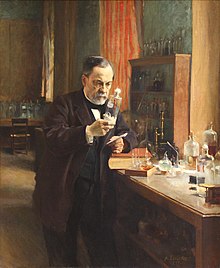

- Embryology is the study of the early development of organisms.
- Endocrinology is the study of hormones and their effect throughout the body of animals.
- Epidemiology is the study of the demographics of disease processes, and includes, but is not limited to, the study of epidemics.
- biological inheritance.
- Gynecologyis the study of female reproductive system.
- .
- Immunology is the study of the immune system, which includes the innate and adaptive immune system in humans, for example.
- chronic conditions, and how to prevent, treat and reverse them.
- Medical physics is the study of the applications of physics principles in medicine.
- .
- transcription and translationof the genetic material.
- Neuroscience includes those disciplines of science that are related to the study of the nervous system. A main focus of neuroscience is the biology and physiology of the human brain and spinal cord. Some related clinical specialties include neurology, neurosurgery and psychiatry.
- neoplasticdiseases.
- Pathology as a scienceis the study of disease – the causes, course, progression and resolution thereof.
- Pharmacology is the study of drugs and their actions.
- Photobiology is the study of the interactions between non-ionizing radiation and living organisms.
- Physiology is the study of the normal functioning of the body and the underlying regulatory mechanisms.
- Radiobiology is the study of the interactions between ionizing radiation and living organisms.
- Toxicology is the study of hazardous effects of drugs and poisons.
Specialties
The examples and perspective in this section deal primarily with UK and do not represent a worldwide view of the subject. (February 2023) |
In the broadest meaning of "medicine", there are many different specialties. In the UK, most specialities have their own body or college, which has its own entrance examination. These are collectively known as the Royal Colleges, although not all currently use the term "Royal". The development of a speciality is often driven by new technology (such as the development of effective anaesthetics) or ways of working (such as emergency departments); the new specialty leads to the formation of a unifying body of doctors and the prestige of administering their own examination.
Within medical circles, specialities usually fit into one of two broad categories: "Medicine" and "Surgery". "Medicine" refers to the practice of non-operative medicine, and most of its subspecialties require preliminary training in Internal Medicine. In the UK, this was traditionally evidenced by passing the examination for the Membership of the
Surgical specialty
Surgery is an ancient medical specialty that uses operative manual and instrumental techniques on a patient to investigate or treat a
Surgical training in the U.S. requires a minimum of five years of residency after medical school. Sub-specialties of surgery often require seven or more years. In addition, fellowships can last an additional one to three years. Because post-residency fellowships can be competitive, many trainees devote two additional years to research. Thus in some cases surgical training will not finish until more than a decade after medical school. Furthermore, surgical training can be very difficult and time-consuming.
Surgical subspecialties include those a physician may specialize in after undergoing general surgery residency training as well as several surgical fields with separate residency training. Surgical subspecialties that one may pursue following general surgery residency training: [26]
- Bariatric surgery
- Cardiovascular surgery – may also be pursued through a separate cardiovascular surgery residency track
- Colorectal surgery
- Endocrine surgery
- General surgery
- Hand surgery
- Hepatico-Pancreatico-Biliary Surgery
- Minimally invasive surgery
- Pediatric surgery
- Plastic surgery – may also be pursued through a separate plastic surgery residency track
- Surgical critical care
- Surgical oncology
- Transplant surgery
- Trauma surgery
- Vascular surgery – may also be pursued through a separate vascular surgery residency track
Other surgical specialties within medicine with their own individual residency training:
- Dermatology
- Neurosurgery
- Ophthalmology
- Oral and maxillofacial surgery
- Orthopedic surgery
- Otorhinolaryngology
- Podiatric surgery – do not undergo medical school training, but rather separate training in podiatry school
- Urology
Internal medicine specialty
Internal medicine is the medical specialty dealing with the prevention, diagnosis, and treatment of adult diseases.[27] According to some sources, an emphasis on internal structures is implied.[28] In North America, specialists in internal medicine are commonly called "internists". Elsewhere, especially in Commonwealth nations, such specialists are often called physicians.[29] These terms, internist or physician (in the narrow sense, common outside North America), generally exclude practitioners of gynecology and obstetrics, pathology, psychiatry, and especially surgery and its subspecialities.
Because their patients are often seriously ill or require complex investigations, internists do much of their work in hospitals. Formerly, many internists were not subspecialized; such general physicians would see any complex nonsurgical problem; this style of practice has become much less common. In modern urban practice, most internists are subspecialists: that is, they generally limit their medical practice to problems of one organ system or to one particular area of medical knowledge. For example, gastroenterologists and nephrologists specialize respectively in diseases of the gut and the kidneys.[30]
In the Commonwealth of Nations and some other countries, specialist pediatricians and geriatricians are also described as specialist physicians (or internists) who have subspecialized by age of patient rather than by organ system. Elsewhere, especially in North America, general pediatrics is often a form of primary care.
There are many subspecialities (or subdisciplines) of internal medicine:
- Angiology/Vascular Medicine
- Bariatrics
- Cardiology
- Critical care medicine
- Endocrinology
- Gastroenterology
- Geriatrics
- Hematology
- Hepatology
- Infectious disease
- Nephrology
- Neurology
- Oncology
- Pediatrics
- Pulmonology/Pneumology/Respirology/chest medicine
- Rheumatology
- Sports Medicine
Training in internal medicine (as opposed to surgical training), varies considerably across the world: see the articles on medical education for more details. In North America, it requires at least three years of residency training after medical school, which can then be followed by a one- to three-year fellowship in the subspecialties listed above. In general, resident work hours in medicine are less than those in surgery, averaging about 60 hours per week in the US. This difference does not apply in the UK where all doctors are now required by law to work less than 48 hours per week on average.
Diagnostic specialties
- clinical immunology.
- Clinical neurophysiology is concerned with testing the physiology or function of the central and peripheral aspects of the nervous system. These kinds of tests can be divided into recordings of: (1) spontaneous or continuously running electrical activity, or (2) stimulus evoked responses. Subspecialties include electroencephalography, electromyography, evoked potential, nerve conduction study and polysomnography. Sometimes these tests are performed by techs without a medical degree, but the interpretation of these tests is done by a medical professional.
- Diagnostic ultrasonography, and nuclear magnetic resonance tomography. Interventional radiologists can access areas in the body under imaging for an intervention or diagnostic sampling.
- Nuclear medicine is concerned with studying human organ systems by administering radiolabelled substances (radiopharmaceuticals) to the body, which can then be imaged outside the body by a gamma camera or a PET scanner. Each radiopharmaceutical consists of two parts: a tracer that is specific for the function under study (e.g., neurotransmitter pathway, metabolic pathway, blood flow, or other), and a radionuclide (usually either a gamma-emitter or a positron emitter). There is a degree of overlap between nuclear medicine and radiology, as evidenced by the emergence of combined devices such as the PET/CT scanner.
- fluorescent in situ hybridization(FISH) fall within the territory of pathology.
Other major specialties
The following are some major medical specialties that do not directly fit into any of the above-mentioned groups:
- Anesthesiology (also known as anaesthetics): concerned with the perioperative management of the surgical patient. The anesthesiologist's role during surgery is to prevent derangement in the vital organs' (i.e. brain, heart, kidneys) functions and postoperative pain. Outside of the operating room, the anesthesiology physician also serves the same function in the labor and delivery ward, and some are specialized in critical medicine.
- trauma, surgical, medical, pediatric, and psychiatric emergencies.
- family practice, general practiceor primary care is, in many countries, the first port-of-call for patients with non-emergency medical problems. Family physicians often provide services across a broad range of settings including office based practices, emergency department coverage, inpatient care, and nursing home care.
- Medical genetics is concerned with the diagnosis and management of hereditary disorders.
- Neurology is concerned with diseases of the nervous system. In the UK, neurology is a subspecialty of general medicine.
- fertility medicineare generally practiced by gynecological specialists.
- Pediatrics (AE) or paediatrics (BE) is devoted to the care of infants, children, and adolescents. Like internal medicine, there are many pediatric subspecialties for specific age ranges, organ systems, disease classes, and sites of care delivery.
- Pharmaceutical medicine is the medical scientific discipline concerned with the discovery, development, evaluation, registration, monitoring and medical aspects of marketing of medicines for the benefit of patients and public health.
- congenital disorders.
- Podiatric medicineis the study of, diagnosis, and medical & surgical treatment of disorders of the foot, ankle, lower limb, hip and lower back.
- Preventive medicineis the branch of medicine concerned with preventing disease.
- Community health or public health is an aspect of health services concerned with threats to the overall health of a community based on population health analysis.
- behavioral disorders. Related fields include psychotherapy and clinical psychology.
Interdisciplinary fields
Some interdisciplinary sub-specialties of medicine include:
- Addiction medicine deals with the treatment of addiction.
- Aerospace medicine deals with medical problems related to flying and space travel.
- Biomedical Engineering is a field dealing with the application of engineeringprinciples to medical practice.
- therapeuticsinteract with patients.
- Conservation medicine studies the relationship between human and non-human animal health, and environmental conditions. Also known as ecological medicine, environmental medicine, or medical geology.
- Disaster medicine deals with medical aspects of emergency preparedness, disaster mitigation and management.
- Diving medicine (or hyperbaric medicine) is the prevention and treatment of diving-related problems.
- Evolutionary medicine is a perspective on medicine derived through applying evolutionary theory.
- legalcontext, such as determination of the time and cause of death, type of weapon used to inflict trauma, reconstruction of the facial features using remains of deceased (skull) thus aiding identification.
- Gender-based medicinestudies the biological and physiological differences between the human sexes and how that affects differences in disease.
- Health informatics is a relatively recent field that deal with the application of computers and information technology to medicine.
- Hospice and Palliative Medicine is a relatively modern branch of clinical medicine that deals with pain and symptom relief and emotional support in patients with terminal illnesses including cancer and heart failure.
- hospitalists in the United States and Canada. The term Most Responsible Physician (MRP) or attending physician is also used interchangeably to describe this role.
- Laser medicine involves the use of lasers in the diagnostics or treatment of various conditions.
- Many other dietetics
- ethical and moralprinciples that apply values and judgments to the practice of medicine.
- Medical humanities includes the humanities (literature, philosophy, ethics, history and religion), social science (anthropology, cultural studies, psychology, sociology), and the arts (literature, theater, film, and visual arts) and their application to medical education and practice.
- Nosokinetics is the science/subject of measuring and modelling the process of care in health and social care systems.
- Nosology is the classification of diseases for various purposes.
- Occupational medicine is the provision of health advice to organizations and individuals to ensure that the highest standards of health and safety at work can be achieved and maintained.
- pain medicine, or algiatry) is the medical discipline concerned with the relief of pain.
- Pharmacogenomics is a form of individualized medicine.
- Podiatric medicine is the study of, diagnosis, and medical treatment of disorders of the foot, ankle, lower limb, hip and lower back.
- Sexual medicine is concerned with diagnosing, assessing and treating all disorders related to sexuality.
- athletes, amateur and professional.
- Therapeutics is the field, more commonly referenced in earlier periods of history, of the various remedies that can be used to treat disease and promote health.[31]
- Travel medicine or emporiatrics deals with health problems of international travelers or travelers across highly different environments.
- Tropical medicine deals with the prevention and treatment of tropical diseases. It is studied separately in temperate climates where those diseases are quite unfamiliar to medical practitioners and their local clinical needs.
- Urgent carefocuses on delivery of unscheduled, walk-in care outside of the hospital emergency department for injuries and illnesses that are not severe enough to require care in an emergency department. In some jurisdictions this function is combined with the emergency department.
- veterinariansapply similar techniques as physicians to the care of non-human animals.
- Wilderness medicineentails the practice of medicine in the wild, where conventional medical facilities may not be available.
Education and legal controls
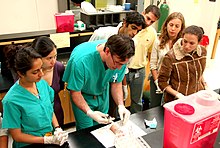
Medical education and training varies around the world. It typically involves entry level education at a university
Since knowledge, techniques, and medical technology continue to evolve at a rapid rate, many regulatory authorities require continuing medical education. Medical practitioners upgrade their knowledge in various ways, including medical journals, seminars, conferences, and online programs. A database of objectives covering medical knowledge, as suggested by national societies across the United States, can be searched at http://data.medobjectives.marian.edu/ Archived 4 October 2018 at the Wayback Machine.[32]
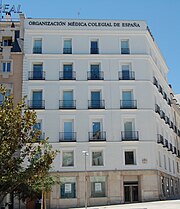
In most countries, it is a legal requirement for a medical doctor to be licensed or registered. In general, this entails a medical degree from a university and accreditation by a medical board or an equivalent national organization, which may ask the applicant to pass exams. This restricts the considerable legal authority of the medical profession to physicians that are trained and qualified by national standards. It is also intended as an assurance to patients and as a safeguard against
In the European Union, the profession of doctor of medicine is regulated. A profession is said to be regulated when access and exercise is subject to the possession of a specific professional qualification. The regulated professions database contains a list of regulated professions for doctor of medicine in the EU member states, EEA countries and Switzerland. This list is covered by the Directive 2005/36/EC.
Doctors who are negligent or intentionally harmful in their care of patients can face charges of medical malpractice and be subject to civil, criminal, or professional sanctions.
Medical ethics
Medical ethics is a system of moral principles that apply values and judgments to the practice of medicine. As a scholarly discipline, medical ethics encompasses its practical application in clinical settings as well as work on its history, philosophy, theology, and sociology. Six of the values that commonly apply to medical ethics discussions are:
- Latin: Voluntas aegroti suprema lex.)
- beneficence – a practitioner should act in the best interest of the patient. (Latin: Salus aegroti suprema lex.)
- justice– concerns the distribution of scarce health resources, and the decision of who gets what treatment (fairness and equality).
- non-maleficence – "first, do no harm" (Latin: primum non-nocere).
- respect for persons – the patient (and the person treating the patient) have the right to be treated with dignity.
- Tuskegee syphilis experiment, and others.
Values such as these do not give answers as to how to handle a particular situation, but provide a useful framework for understanding conflicts. When moral values are in conflict, the result may be an ethical
History

Ancient world
The earliest known medical texts in the world were found in the ancient
In Egypt, Imhotep (3rd millennium BCE) is the first physician in history known by name. The oldest Egyptian medical text is the Kahun Gynaecological Papyrus from around 2000 BCE, which describes gynaecological diseases. The Edwin Smith Papyrus dating back to 1600 BCE is an early work on surgery, while the Ebers Papyrus dating back to 1500 BCE is akin to a textbook on medicine.[36]
In China, archaeological evidence of medicine in Chinese dates back to the
In India, the surgeon Sushruta described numerous surgical operations, including the earliest forms of plastic surgery.[39][dubious ][40] Earliest records of dedicated hospitals come from Mihintale in Sri Lanka where evidence of dedicated medicinal treatment facilities for patients are found.[41][42]
In Greece, the ancient Greek physician
Most of our knowledge of ancient
Middle Ages
The concept of hospital as institution to offer medical care and possibility of a cure for the patients due to the ideals of Christian charity, rather than just merely a place to die, appeared in the Byzantine Empire.[48]
Although the concept of uroscopy was known to Galen, he did not see the importance of using it to localize the disease. It was under the Byzantines with physicians such of Theophilus Protospatharius that they realized the potential in uroscopy to determine disease in a time when no microscope or stethoscope existed. That practice eventually spread to the rest of Europe.[49]
After 750 CE, the Muslim world had the works of Hippocrates, Galen and Sushruta translated into
In Europe,
However, the fourteenth and fifteenth century Black Death devastated both the Middle East and Europe, and it has even been argued that Western Europe was generally more effective in recovering from the pandemic than the Middle East.[65] In the early modern period, important early figures in medicine and anatomy emerged in Europe, including Gabriele Falloppio and William Harvey.
The major shift in medical thinking was the gradual rejection, especially during the
Modern

Veterinary medicine was, for the first time, truly separated from human medicine in 1761, when the French veterinarian Claude Bourgelat founded the world's first veterinary school in Lyon, France. Before this, medical doctors treated both humans and other animals.
Modern scientific
The post-18th century
From New Zealand and Australia came
Others that did significant work include
As science and technology developed, medicine became more reliant upon
.The first antibiotic was arsphenamine (Salvarsan) discovered by Paul Ehrlich in 1908 after he observed that bacteria took up toxic dyes that human cells did not. The first major class of antibiotics was the sulfa drugs, derived by German chemists originally from azo dyes.

Pharmacology has become increasingly sophisticated; modern biotechnology allows drugs targeted towards specific physiological processes to be developed, sometimes designed for compatibility with the body to reduce side-effects. Genomics and knowledge of human genetics and human evolution is having increasingly significant influence on medicine, as the causative genes of most monogenic genetic disorders have now been identified, and the development of techniques in molecular biology, evolution, and genetics are influencing medical technology, practice and decision-making.
Evidence-based medicine is a contemporary movement to establish the most effective
Quality, efficiency, and access
Evidence-based medicine, prevention of medical error (and other "iatrogenesis"), and avoidance of unnecessary health care are a priority in modern medical systems. These topics generate significant political and public policy attention, particularly in the United States where healthcare is regarded as excessively costly but population health metrics lag similar nations.[75]
Globally, many developing countries lack access to care and access to medicines.[76] As of 2015[update], most wealthy developed countries provide health care to all citizens, with a few exceptions such as the United States where lack of health insurance coverage may limit access.[77]
See also
- Alternative medicine – Form of non-scientific healing
- List of causes of death by rate
- List of disorders
- List of important publications in medicine
- Lists of diseases
- Medical aid– Type of insurance
- Medical billing – Part of the US health system's reimbursement process
- Medical classification – Use of schemes of standardized codes
- Medical encyclopedia – Written compendium about diseases
- Medical equipment– Device to be used for medical purposes
- Medical ethics – System of moral principles of the practice of medicine
- Medical literature – Scientific literature of medicine
- Medical malpractice – Legal cause of action when health professionals deviate from standards of practice harming a patient
- Medical psychology – Application of psychological principles to the practice of medicine
- Medical sociology – Branch of sociology
- Philosophy of healthcare
- Quackery – Promotion of fraudulent or ignorant medical practices
- Traditional medicine – Formalized folk medicine
References
- ISBN 978-0-19-874669-0.
- S2CID 73306806.
- ^ "Dictionary, medicine". Archived from the original on 4 March 2016. Retrieved 2 December 2013.
- ^ "Medicine, n.1". OED Online. Oxford University Press. September 2014. Archived from the original on 18 August 2021. Retrieved 8 November 2014.
- Oxford Dictionaries Online. Oxford University Press. Archivedfrom the original on 18 August 2021. Retrieved 8 November 2014.
- Avestanvi-mad "physician"
- ^ "Medicine" Archived 11 October 2007 at the Wayback Machine Online Etymology Dictionary
- hdl:10665/67294.
- PMID 17683315.
- ^ OCLC 232304023.
- PMID 16245584. Archived from the originalon 9 March 2008.
- ^ Nordqvist C (26 August 2009). "What Are Symptoms? What Are Signs?". Medical News Today. Archived from the original on 1 July 2014.
- .
- ^ a b c d "Clinical examination". The Free Dictionary. Archived from the original on 4 February 2021. Retrieved 18 January 2021.
- PMID 10966092.
- OCLC 793902685.[page needed]
- ^ "Insuring America's Health: Principles and Recommendations". Institute of Medicine at the National Academies of Science. 14 January 2004. Archived from the original on 19 October 2009.
- ^ Battista JR, McCabe J (4 June 1999). "The Case For Single Payer, Universal Health Care for the United States". Cthealth.server101.com. Archived from the original on 23 April 2018. Retrieved 4 May 2009.
- from the original on 17 February 2004. Retrieved 16 April 2006.
- ISBN 978-1-349-47022-8. Archivedfrom the original on 14 March 2022. Retrieved 6 November 2021.
- ^ "Primary, Secondary and Tertiary HealthCare – Arthapedia". www.arthapedia.in. Archived from the original on 28 January 2021. Retrieved 19 January 2021.
- ^ "Types of health care providers: MedlinePlus Medical Encyclopedia". medlineplus.gov. Archived from the original on 23 January 2021. Retrieved 19 January 2021.
- ^ "Secondary Health Care". International Medical Corps. Archived from the original on 17 January 2021. Retrieved 19 January 2021.
- PMID 23599551.
- PMID 12917273.
- ^ "What are the surgical specialties?". American College of Surgeons. Archived from the original on 22 January 2021. Retrieved 18 January 2021.
- ISBN 978-1-78100-199-8. Archivedfrom the original on 18 August 2021. Retrieved 18 January 2021.
- ^ "internal medicine" at Dorland's Medical Dictionary
- ISBN 978-1-85326-318-7.
- ^ "The Royal Australasian College of Physicians: What are Physicians?". Royal Australasian College of Physicians. Archived from the original on 6 March 2008. Retrieved 5 February 2008.
- ^ "therapeutics (medicine)". Britannica Online Encyclopedia. Archived from the original on 18 December 2007. Retrieved 21 April 2012.
- PMID 29499684.
- ISBN 978-0-19-955730-1. Archivedfrom the original on 27 February 2024. Retrieved 26 December 2023.
- ISBN 978-90-6299-220-1. Archivedfrom the original on 27 February 2024. Retrieved 26 December 2023.
- ^ Page(5) https://www.asor.org/wp-content/uploads/2019/03/Five_Articles_about_Drugs_Medicine__Alcohol_From_ANEToday_E-book.pdf Archived 20 January 2024 at the Wayback Machine
- ISBN 978-0-8018-2726-6.
- ^ Hong F (2004). "History of Medicine in China" (PDF). McGill Journal of Medicine. 8 (1): 7984. Archived from the original (PDF) on 1 December 2013.
- ISBN 978-0-520-92849-7. Archivedfrom the original on 18 April 2016. Retrieved 14 November 2015.
- from the original on 29 September 2018. Retrieved 9 August 2021.
- PMID 12082339.
- ^ Aluvihare A (November 1993). "Rohal Kramaya Lovata Dhayadha Kale Sri Lankikayo". Vidhusara Science Magazine: 5.
- ^ Rannan-Eliya RP, De Mel N (9 February 1997). "Resource mobilization in Sri Lanka's health sector" (PDF). Harvard School of Public Health & Health Policy Programme, Institute of Policy Studies. p. 19. Archived (PDF) from the original on 29 October 2001. Retrieved 16 July 2009.
- PMID 18392218.
- ^ The father of modern medicine: the first research of the physical factor of tetanus Archived 18 November 2011 at the Wayback Machine, European Society of Clinical Microbiology and Infectious Diseases
- ^ Garrison FH (1966). History of Medicine. Philadelphia: W.B. Saunders Company. p. 97.
- ^ Martí-Ibáñez F (1961). A Prelude to Medical History. New York: MD Publications, Inc. p. 90. Library of Congress ID: 61-11617.
- ^ Vaisrub S, A Denman M, Naparstek Y, Gilon D (2008). "Medicine". Encyclopaedia Judaica. The Gale Group. Archived from the original on 18 May 2015. Retrieved 27 August 2014.
- ISBN 978-0-226-48231-6.
- ^ Prioreschi P (2004). A History of Medicine: Byzantine and Islamic medicine. Horatius Press. p. 146.
- PMID 6989499.
- ^ "Avicenna 980–1037". Hcs.osu.edu. Archived from the original on 7 October 2008. Retrieved 19 January 2010.
- ^ ""The Canon of Medicine" (work by Avicenna)". Encyclopædia Britannica. 2008. Archived from the original on 28 May 2008. Retrieved 11 June 2008.
- S2CID 57308997.
- PMID 17106533.
- ^ "Chairman's Reflections: Traditional Medicine Among Gulf Arabs, Part II: Blood-letting". Heart Views. 5 (2): 74–85 [80]. 2004. Archived from the original on 8 March 2013.
- PMID 12134355.
- ^ a b Tschanz DW (2003). "Arab(?) Roots of European Medicine". Heart Views. 4 (2). Archived from the original on 3 May 2004. Retrieved 9 June 2013. copy Archived 30 November 2004 at the Wayback Machine
- OL 12911905W.
- ^ Iskandar A (2006). "Al-Rāzī". Encyclopaedia of the history of science, technology, and medicine in non-western cultures (2nd ed.). Springer. pp. 155–156.
- ^ Ganchy S (2008). Islam and Science, Medicine, and Technology. New York: Rosen Pub.
- ^ ISBN 978-1-108-01588-2.
By writing a monograph on 'Diseases in Children' he may also be looked upon as the father of paediatrics.
- ^ Micheau F (1996). "The Scientific Institutions in the Medieval Near East". In Rashed R, Morelon R (eds.). Encyclopedia of the History of Arabic Science. Routledge. pp. 991–992.
- ISBN 978-0-567-08969-4.
- OCLC 793902685.
- OCLC 2296964.).
- ^ "Page through a virtual copy of Vesalius's De Humanis Corporis Fabrica". Archive.nlm.nih.gov. Archived from the original on 11 October 2014. Retrieved 21 April 2012.
- ISBN 978-0-13-144329-7.
- ^ Michael Servetus Research Archived 13 November 2012 at the Wayback Machine Website with a graphical study on the Manuscript of Paris by Servetus
- PMID 17183395.
- ISBN 978-0-230-27471-6.
- ^ Cooper P (2004). "Medicinal properties of body parts". The Pharmaceutical Journal. 273 (7330): 900–902. Archived from the original on 3 December 2008.
- PMID 15032608.
- PMID 26281720.
- S2CID 21855086.
- PMID 19120983.
- ^ "WHO | Tracking universal health coverage: 2017 Global Monitoring Report". WHO. Archived from the original on 8 October 2020. Retrieved 14 June 2019.
- ^ "Coverage for health care | READ online". OECD iLibrary. Archived from the original on 8 March 2021. Retrieved 14 June 2019.
